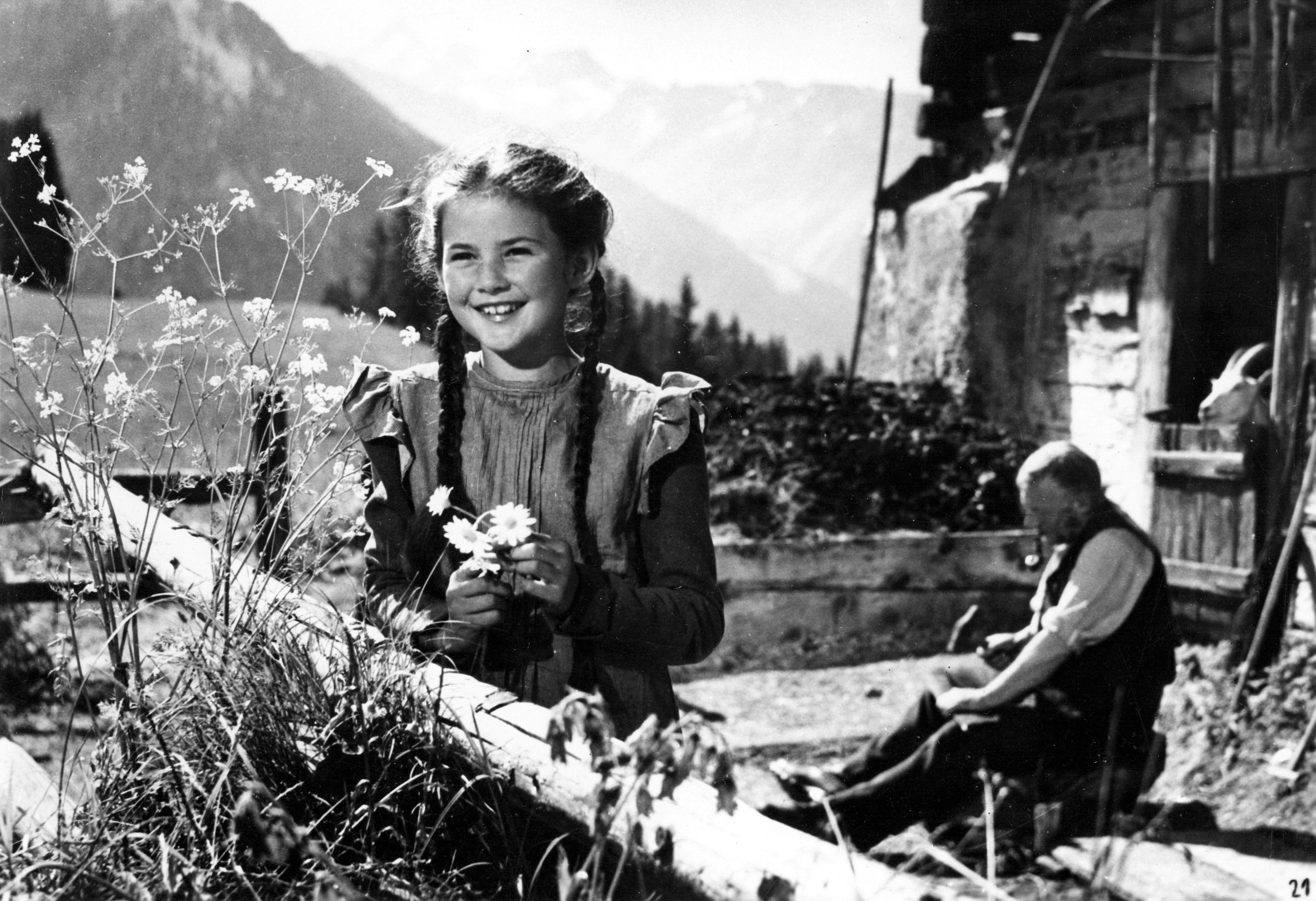Heidi’s wholesome message still winning fans

The story of Heidi may have been written in 1880, but author Johanna Spyri’s messages of optimism, altruism and nature appreciation continue to attract new readers around the globe.
“If Heidi is so popular today, it is because it demonstrates an ecological sensibility, long before the term was coined, which chimes with current health trends,” according to Geneva literary professor Jean-Michel Wissmer.
“Everywhere we turn someone is trying to sell us the mountains with the claim that the air is purer, the flowers more beautiful and the sun brighter there,” said Wissmer, the author of a new book, Heidi: Enquête sur un mythe suisse qui a conquis le monde (Heidi: an Investigation into a Swiss Myth that has Conquered the World).
And then there is the novel’s somewhat religious line: to love one another.
“In many Heidi adaptations, this message has often been brushed aside for fear of being old-fashioned. But in today’s fragmented society, there is a need for a return to traditional values – traditional values that are faithfully represented by Heidi,” Wissmer told swissinfo.ch.
The little girl from the Swiss canton of Graubünden is such a humanitarian that she is practically deserving of a Red Cross armlet, believes Gérard Demierre, a theatre director from the canton of Vaud who once put on a stage version of Heidi.
“Heidi belongs to two [different] Swiss landscapes: the Alps and the mind,” he noted.
“The first is the envy of the whole world. People everywhere project their dreams of beauty on this alpine landscape. The second landscape is more local. It’s to do with our humanitarian impulses and captures many a heart because of this.”
There is indeed something very appealing about the destitute orphan who rushes to the rescue of Clara, a 12-year-old German girl who is very rich, disabled and lonely. To help her escape her suffering, Heidi invites her to join her at home in Switzerland.
Markus Imboden, a Swiss-German filmmaker, puts this brave gesture down to naive generosity. In his film Heidi, which was released in 2001, Imboden had Heidi’s traditionally blond hair dyed blue. A punk statement? Not at all, says Imboden.
“It was spiteful Clara who dyed Heidi’s naturally blond hair a horrible blue, because she was jealous of her. The Swiss heroine was royally fooled by the German girl. The moral of the story: protect your blondness, Swiss girls!”
Icon
Is Imboden’s moral a patriotic message or ironic satire? He won’t say. The fact remains, however, that today Heidi is still embraced by politicians and consumer society alike.
While Heidi boosts sales in the food retail market (yoghurt tubs, among many other products) and the clothing sector (through an online clothing shop), she can also be invoked to redefine Switzerland’s image in national political events.
In the weeks leading up to a recent public vote on the initiative “to end the invasive construction of secondary residences”, some proponents of the ‘no’ vote asked in the press: “Would Heidi still recognise her native land?”
Abroad, Japan, the United States, Spain and France have all adopted Heidi, adapting her to their culture.
“The Japanese identify with her because of their sensitivity to nature, as well as their sense of order and discipline,” said Wissmer.
Bigger than Harry Potter?
Today there are dozens of Heidi films and Japanese manga animations. Arguably the most famous film version has been the 1937 classic starring Shirley Temple.
“What appeals to Americans, who like to accentuate the positive, is Heidi’s optimism,” said Wissmer.
“Heidi no longer belongs to Johanna Spyri. She belongs to the whole world. In this sense, she is a myth. She is even giving Harry Potter a run for his money. She is the kind of heroine who eclipses her author.”
Who has heard of Johanna Spyri nowadays? Hardly anyone. Yet her novel has been published in some 50 languages and is reportedly the most translated book after the Bible and Don Quixote.
After her parents’ death, Heidi is sent to live with her grandfather on a mountain pasture in the Swiss canton of Graubünden.
After she has adjusted to her new surroundings and made new friends, including the goat herd Peter, she is forced to leave again.
Heidi’s aunt, who has legal custody of her, comes to take her to Frankfurt am Main, where she is to become a companion for Clara, a paralysed 12-year-old girl from a very wealthy family.
But Heidi is unhappy and becomes homesick for her mountain pasture. She falls ill and ends up going back to her grandfather.
Heidi helps her disabled friend to free herself from her suffering and then generously invites her to Switzerland to discover her mountain.
The Swiss writer was born in 1827 in Hirzel, Zurich and died in Zurich in 1901.
Her father was a doctor; her mother a pastor’s daughter. She attended school in Hirzel and went on to study modern languages and the piano in Zurich.
Her youth was marked by a love of books. On discovering Goethe, among other writers, she drifted away from the pious vision of the world her mother had instilled in her.
Spyri spent many summers in Jenins and Maienfeld (Graubünden), which would become the setting for Heidi.
In 1852, Johanna married Bernhard Spyri, a lawyer who later became the town clerk of the city of Zurich. She bore him a son who died in 1884. After the death of her son and her husband, she devoted herself to writing and to works of charity.
Johanna Spyri wrote some 50 published books, including Heidi, which was published in two volumes in 1880 and 1881. To mark the 100th anniversary of her death, a Swiss commemorative coin is being dedicated to her.
(Translated from French by Paul Frank)

In compliance with the JTI standards
More: SWI swissinfo.ch certified by the Journalism Trust Initiative










You can find an overview of ongoing debates with our journalists here . Please join us!
If you want to start a conversation about a topic raised in this article or want to report factual errors, email us at english@swissinfo.ch.